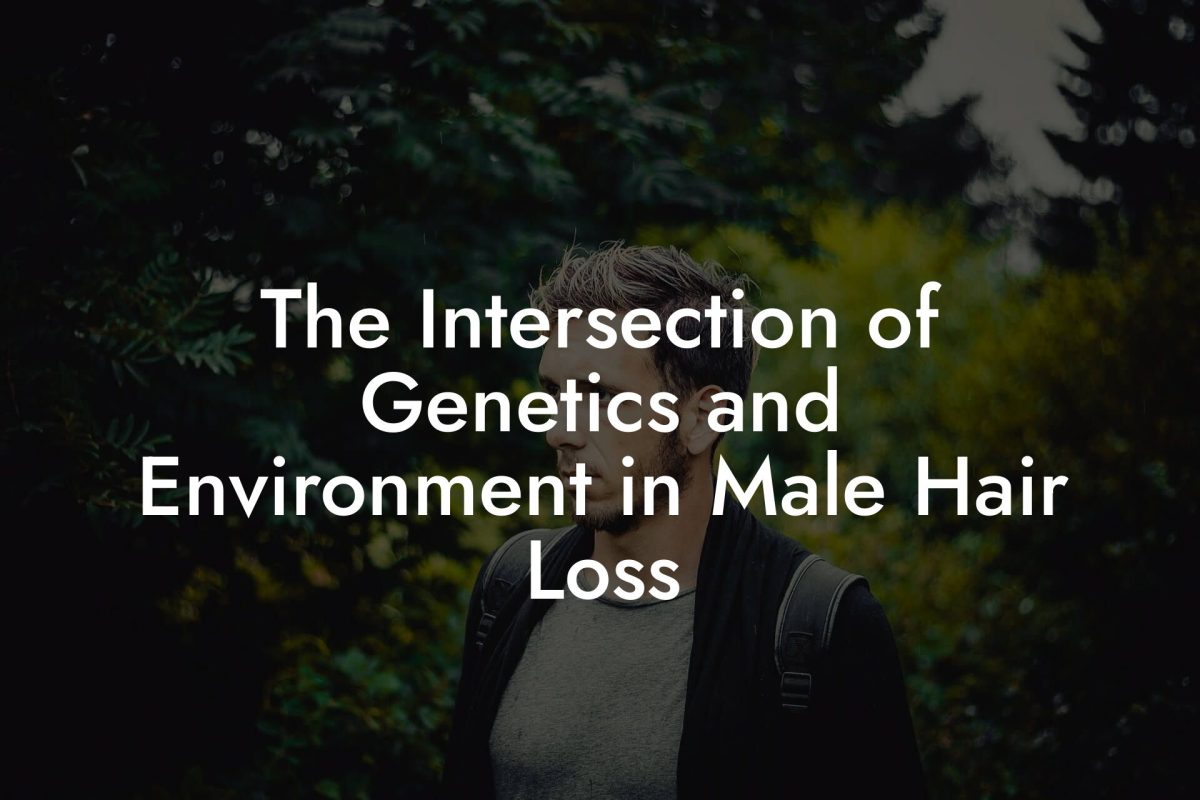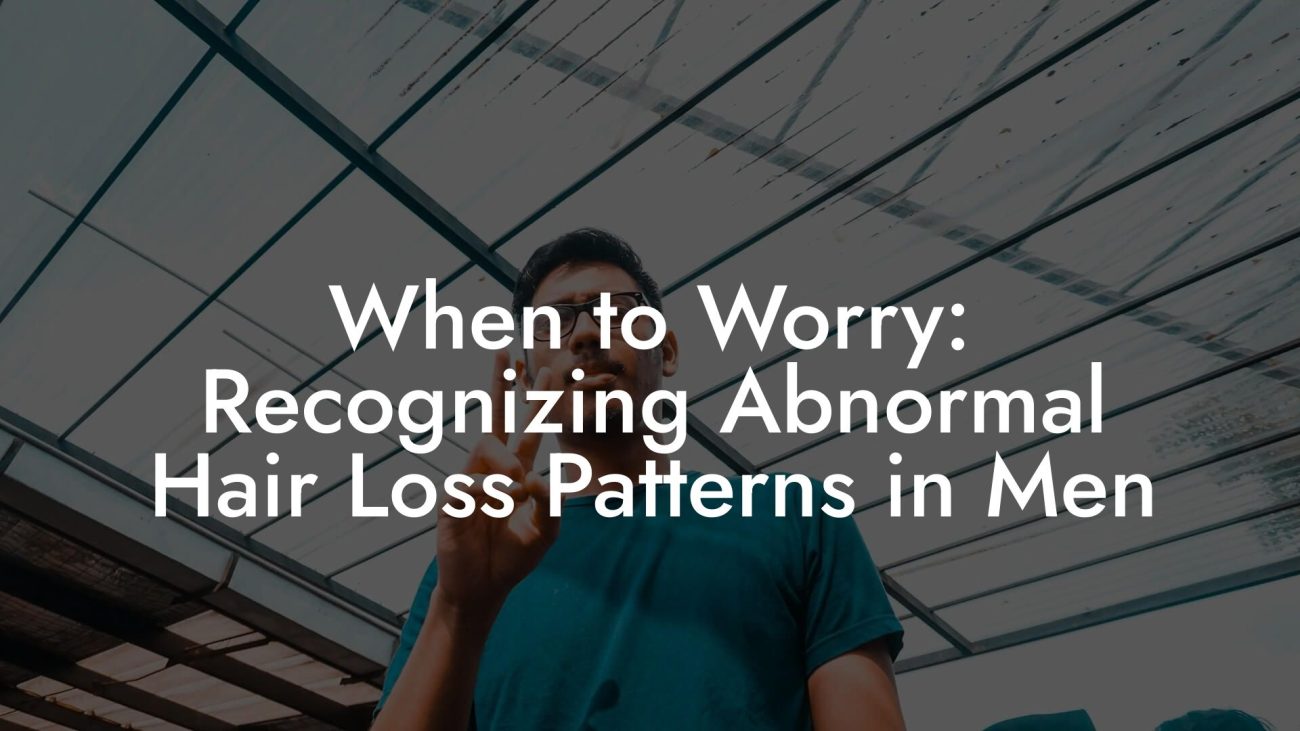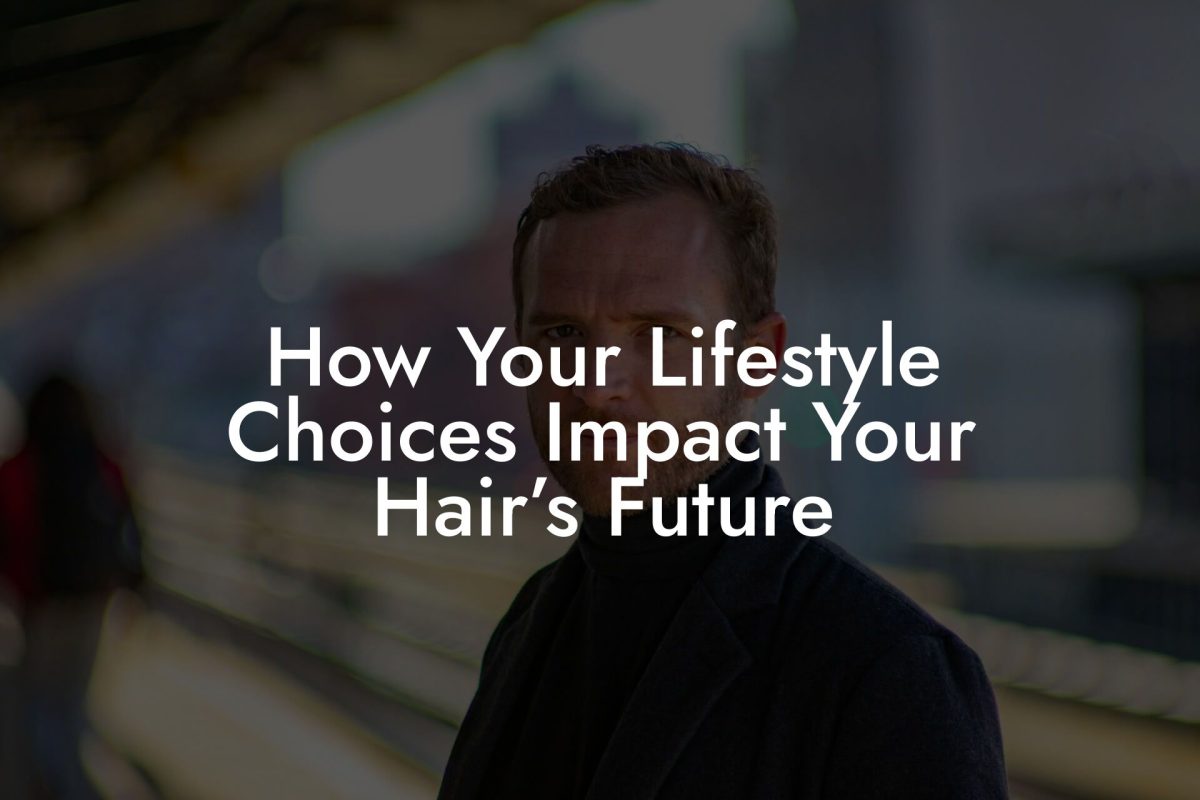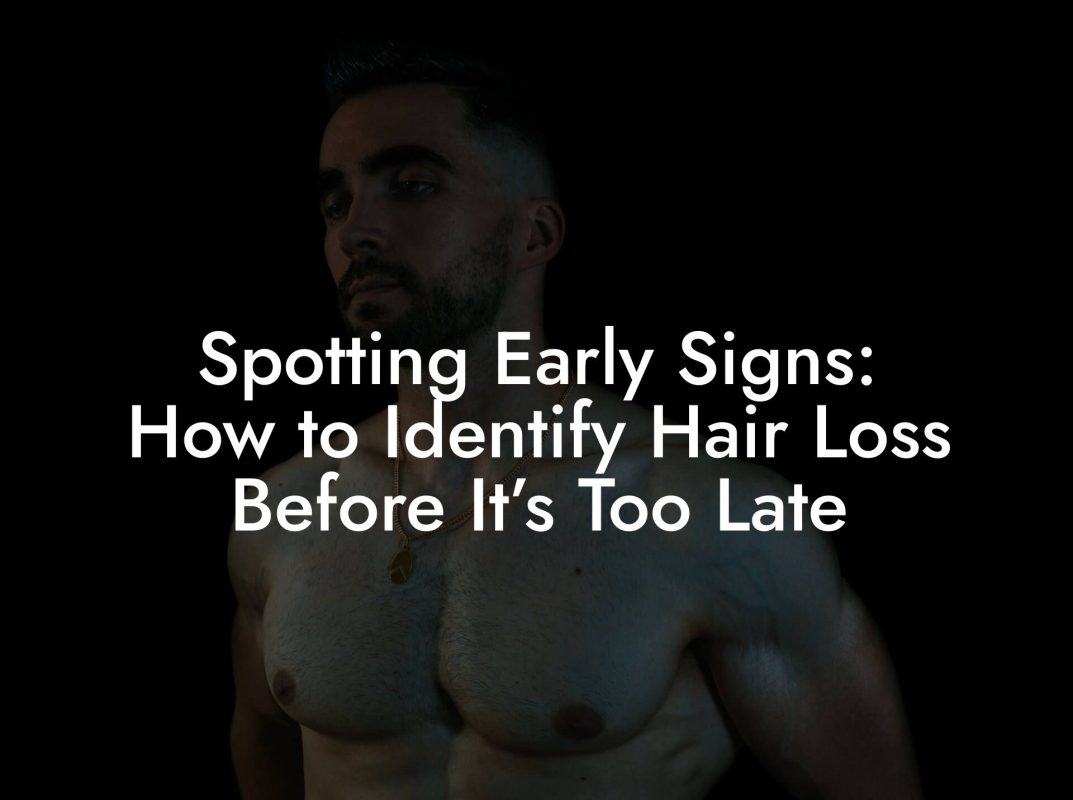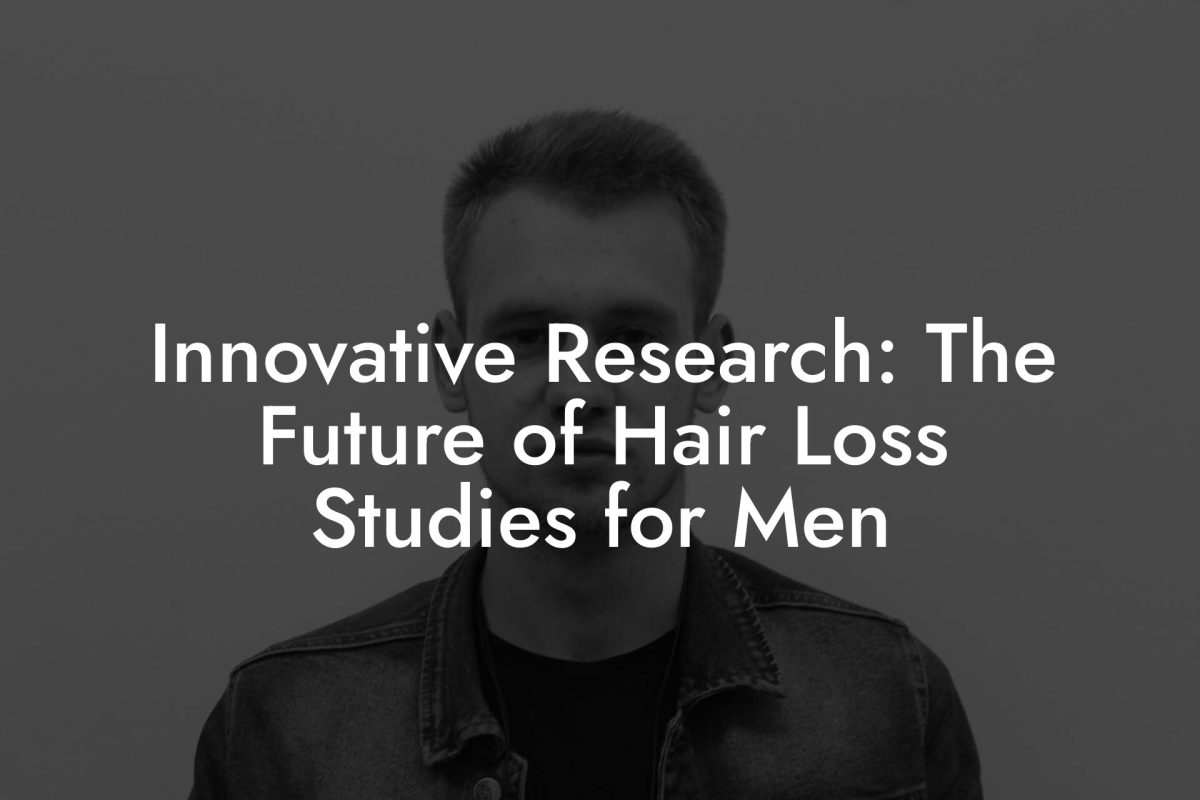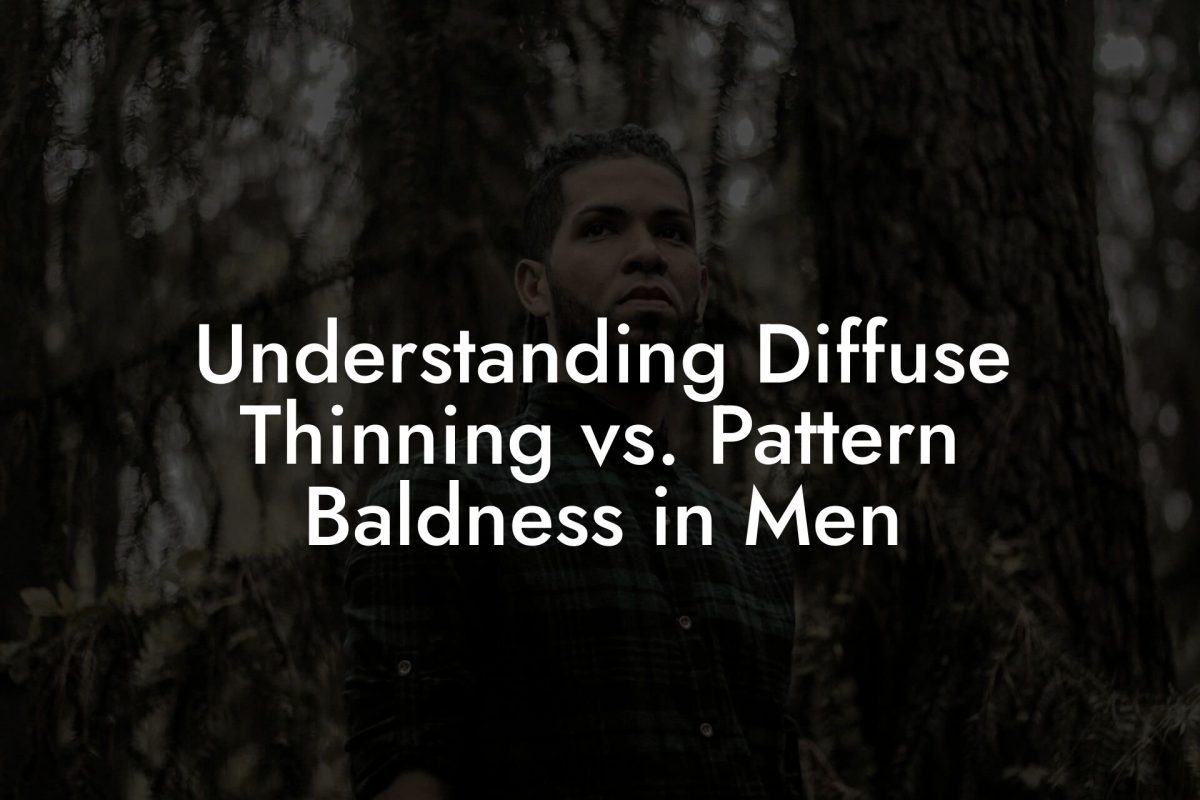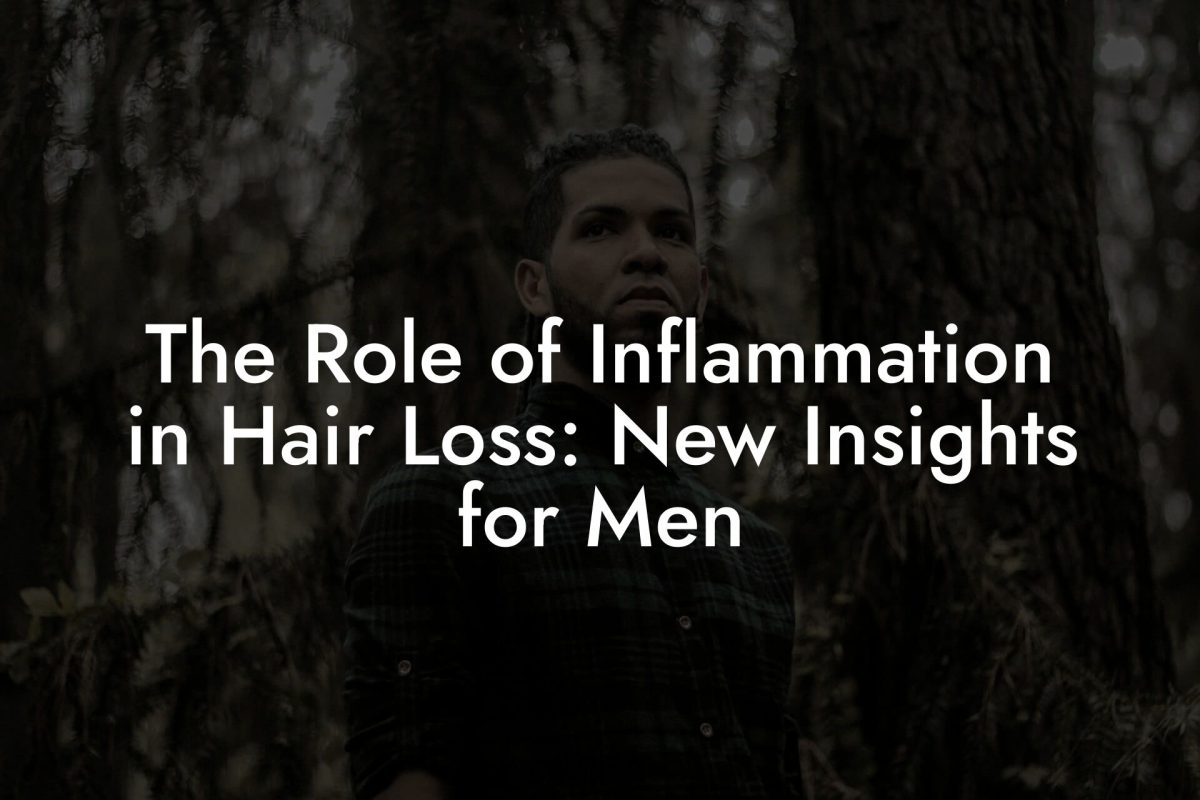Hair Loss Library
The Ultimate Guide to Male Pattern Baldness: Causes and Clues
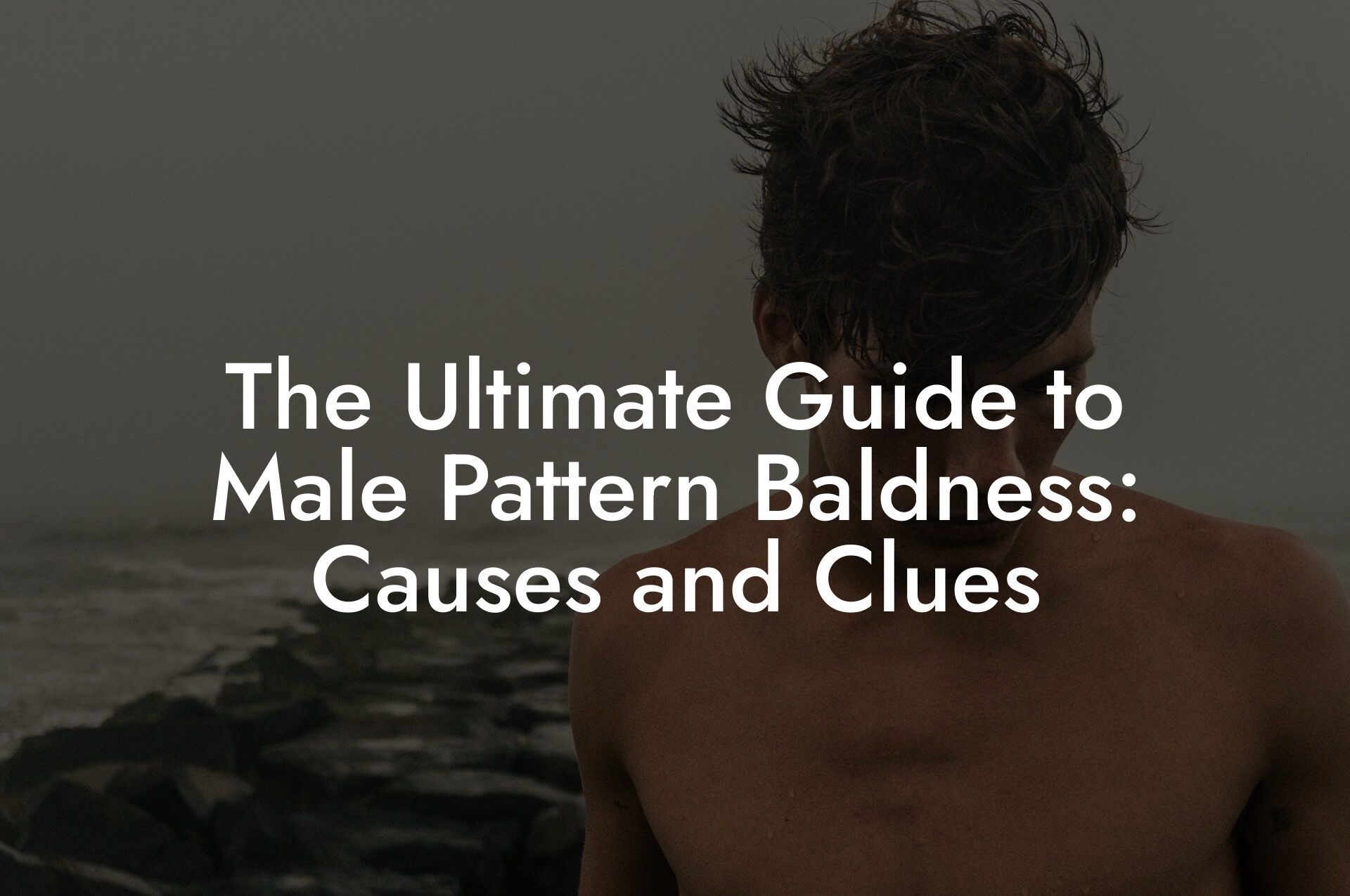
Imagine waking up one day to find that your once luscious mane is starting its subtle retreat—like an overly dramatic friend who just couldn’t handle the spotlight anymore. Welcome to the ultimate guide to male pattern baldness, where we break down the causes, decode the clues, and serve up insights with a side of wit and a dash of real talk. Here at Mane Matrix, we’re all about giving you the lowdown on hair loss without the nerve-wracking doctor appointments or sky-high prices, letting you understand, embrace, or even combat your hair loss journey with confidence.
Understanding Male Pattern Baldness: The What and the Why
Male pattern baldness, medically known as androgenetic alopecia, isn’t some mysterious curse or a plot twist in your favorite series—it’s a common condition that affects millions of men around the globe. Characterized by a gradual thinning of hair, especially at the crown and the receding hairline, this process is largely driven by genetics and hormones. But as we all know, nothing in life is ever that simple. Alongside inherent genes, factors like stress, diet, and lifestyle choices can play supporting roles in this follicular drama.
Think of your hair as a loyal squad of warriors that protect your scalp from the elements and add character to your look. Over time, due to a combination of genetic predispositions and hormonal assaults—like the notorious DHT (dihydrotestosterone)—the hair follicles may shrink, produce thinner hairs, and ultimately go on an extended vacation. And while this might sound like bad news, understanding these causes is the first step in reclaiming confidence and deciding how you want to navigate this journey.
The Genetic Blueprint: Inherited Traits and Hair’s Fickle Future
Let’s face it: your genes are like that family recipe passed down through generations—you can’t really change them, but you can certainly tweak how you use them. Male pattern baldness has a strong genetic component, meaning if your father, grandfather, or that uncle you only see at weddings started showing signs of hair loss, chances are your scalp might follow suit.
The secret lies in the genetic instructions that determine how sensitive your hair follicles are to DHT. Over time, these genetically predisposed follicles gradually shrink, ushering in the classic thinning and recession pattern. The cool (or not-so-cool) part of this is that while you can’t rewrite your genetic code, you can learn to work with it—either by embracing the change or exploring various interventions to keep your locks around a little longer.
In a nutshell, if your family tree has some bare branches, it might be time to start monitoring your own hairline like a seasoned detective on a trending case.
Hormonal Havoc: The Role of DHT and the Androgen Effect
Enter DHT—dihydrotestosterone—the hormone that’s basically the villain in this hair loss saga. Derived from testosterone, DHT binds to receptors in your hair follicles and signals them to miniaturize. Think of it as that overenthusiastic coach who pushes your team too hard until they can’t perform at their best.
For those of you who are scientifically curious (or just like hearing big words), here's the lowdown: DHT is central to male pattern baldness because of its potent effect on the hair follicle. As follicles shrink under its influence, the hairs become thinner and weaker, leading to a visible thinning out. This process is slow and gradual, which is why you might notice a receding hairline or a thinning crown before the transformation is complete.
While hormones are essential for many bodily functions, in the case of your hair, an excess of DHT can be rather counterproductive. Again, knowledge is power—once you understand the hormonal influences behind hair loss, you can start exploring treatments that aim to block the conversion of testosterone to DHT and give your follicles a fighting chance.
Spotting the Early Clues: Is Your Hair Telling You Something?
Much like your phone’s battery indicator or that persistent “low space” alert, your hair offers early warnings when it’s time for a change. The subtle clues of male pattern baldness can start off practically imperceptible, gradually evolving into a noticeable thinning of hair. It often begins with a barely-there receding hairline at the temples or a thinning crown.
Maybe you’re noticing more hair in your brush or on your pillow. Perhaps you’ve paused mid-shower to wonder if that clump of hair was a clue about your genetic destiny. If so, it could be your follicles trying to tell you, “Hey, we’re not as robust as we used to be!” Recognizing these signs early is crucial because it gives you the chance to explore various preventative measures—ranging from lifestyle tweaks to cutting-edge treatments—before things get too out of hand.
Paying attention to these signals is not about obsessing over every stray hair but rather being in tune with your body. Knowing the early clues can empower you to either make proactive decisions for hair care or adopt a more confident, bald truth if that’s the path you choose.
Lifestyle Factors: When Stress, Diet, and Daily Habits Join the Plot
While genetics and hormones are the main characters in the male pattern baldness movie, lifestyle factors play some intriguing cameo roles. Yes, the way you live can significantly influence hair health, making stress, diet, and daily habits crucial supporting players in either staving off hair loss or hastening its arrival.
Stress, often dubbed the silent killer of hair, triggers a condition known as telogen effluvium—a fancy name for when your hair gets shocked into a resting phase too early, resulting in a bulk hair fall. Picture your hair as that one overworked intern who just needs a break—stress doesn’t let it catch a breath, and voila, you end up losing countless strands.
What about diet? Just as your car needs quality fuel to run smoothly, your hair needs a steady supply of nutrients. Proteins, vitamins (especially A, C, D, and E), minerals like zinc and iron, and omega-3 fatty acids are essential in keeping your hair follicles robust and ready to grow. If your diet is lacking, it’s like trying to run the latest smartphone on 1% battery—inevitably, performance will drop.
And don’t forget about sleep and exercise. Regular physical activity increases blood circulation, ensuring that your hair follicles receive ample nutrients, while quality sleep gives your body the time it needs to repair and regenerate. In essence, treating your daily routine as an all-inclusive hair care regimen can make a sizable difference in your hair’s longevity and vibrancy.
Modern Treatments and Natural Remedies: Options to Consider
If you’re looking to press the pause button on male pattern baldness, the modern world has got you covered with a myriad of treatment options—ranging from scientifically backed medications to natural remedies that harness the power of nature.
One of the most talked-about treatments is the use of FDA-approved medications like finasteride and minoxidil. These little powerhouses work by either inhibiting the production of DHT or stimulating hair follicles to produce thicker, more robust strands. While results vary from person to person, many men have reported slowing down their hair loss and even experiencing some regrowth.
For those who lean more towards holistic or natural approaches, essential oils like rosemary, peppermint, and tea tree can offer a gentle boost when combined with regular scalp massage. These natural remedies don’t work like miracle potions, but they can improve blood circulation and may help maintain a healthy scalp environment.
Laser therapy is another modern marvel in hair restoration. Low-level laser therapy (LLLT) devices are designed to stimulate cellular activity and improve hair density. It might sound futuristic—kind of like a scene out of a sci-fi flick—but many have found that regular sessions can help reduce hair thinning with minimal discomfort.
And if you’re not convinced yet, even platelet-rich plasma (PRP) injections, which use your own blood to rejuvenate hair follicles, are making waves as a cutting-edge treatment. Though these treatments require commitment and, in some cases, a little investment, they represent the forefront of non-invasive hair restoration strategies.
Psychological Perspectives: Embracing or Combating Balding
Beyond the biological and lifestyle factors, there’s a psychological dimension to male pattern baldness that deserves a spotlight. Whether you decide to rock the bald look with pride or fight to preserve your hair, the mental battle can be just as challenging as the physical one.
For many men, hair is tied to feelings of youth, virility, and identity. Losing it can trigger confusion, insecurity, or even a drop in self-confidence. However, more and more, the cultural narrative is shifting. Baldness is no longer synonymous with diminished manliness; in fact, it’s often celebrated as a mark of maturity, confidence, and even style.
Embracing baldness can be a liberating experience. Many influencers and celebrities wear their bald heads as badges of honor, turning what was once seen as a flaw into a fashion statement. On the flip side, if you’re determined to combat hair loss, knowing that you’re not alone in this journey—and that there are plenty of effective solutions available—can bolster your resolve.
Whether you choose to embrace your natural evolution or seek out treatments to turn back the clock, understanding the psychological aspects of hair loss can help you make decisions that align with your self-image and lifestyle goals.
Advanced Technologies and Cutting-Edge Research: What’s on the Horizon?
Just when you think the story of hair loss couldn’t get any more sci-fi, technology steps in with promising developments that could change the game. Researchers and clinicians are constantly pushing the boundaries, exploring innovative treatments that target hair regrowth at the cellular level.
From stem cell therapies that aim to stimulate new follicle growth to gene editing techniques that could potentially rewrite the hair loss narrative, the future of hair restoration is bright—and frankly, pretty exciting. While many of these methods are still in the research phase or experimental stages, they offer a glimpse into a world where the inevitability of baldness might be a thing of the past.
Additionally, advancements in imaging and scalp analysis now enable doctors to provide highly personalized treatment plans. Using digital scalp analysis tools, specialists can accurately assess the condition of your hair follicles, enabling recommendations that are tailored to your unique pattern of hair loss. This blend of technology and personalized care means you can approach the issue with a strategy that’s as unique as you are.
So, while you might currently be facing the challenges of male pattern baldness, the horizon is filled with promising research and groundbreaking innovations that are sure to redefine the way we think about hair regeneration.
Lifestyle Hacks to Slow Down the Balding Train
Let’s get practical—what can you do starting today to either maintain your current hair or possibly slow down the progression of hair loss? Beyond high-tech treatments and cutting-edge research, simple lifestyle tweaks can make a significant difference.
First off, managing stress is paramount. Whether it’s through meditation, regular exercise, or indulging in your favorite hobby, finding ways to reduce stress can help mitigate the hormonal spikes that worsen hair loss. Remember, a calm mind is like an oasis for your hair follicles.
Next, check your diet. Incorporate protein-rich foods (lean meats, beans, nuts) to give your hair the building blocks it needs to grow strong and healthy. Vitamins and minerals work like natural hair vitamins—iron for circulation, zinc for repair, and biotin for growth. Consider these nutrients your hair’s favorite vitamins, and stock up accordingly.
Finally, be gentle with your hair. Over-styling, excessive heat, and harsh chemical treatments can all contribute to breakage and thinning. Opt for a mild shampoo, embrace air-drying on occasion, and don’t underestimate the power of a good hair-friendly routine.
Little changes in daily habits can cumulatively create a strong defense system against further hair loss. It’s about embracing both the science and the art of hair care—making each day a proactive step towards a healthier scalp.
Debunking Myths and Misconceptions: Clearing the Hairy Facts
In the world of male pattern baldness, rumors and myths spread as quickly as a viral meme. Let’s set the record straight on a few common misconceptions:
-
Myth #1: Wearing hats causes baldness.
The truth? A hat won’t magically sap your hair. However, consistently tight hats might cause temporary traction alopecia—a stress on the hair follicles—but this is rare. -
Myth #2: Only old men go bald.
Reality check: Male pattern baldness can start as early as your 20s and 30s. Genetics and hormones don’t wait for your birthday to start their work. -
Myth #3: There’s a one-size-fits-all cure.
The verdict: Hair loss is as unique as you are. The most effective strategies are the ones tailored to your own genetic makeup, lifestyle, and the stage at which you are experiencing hair loss. -
Myth #4: Shampoo and conditioner are all you need.
While proper scalp hygiene is important, relying solely on hair care products won’t change the natural progression of male pattern baldness.
Deconstructing these myths not only empowers you with knowledge but also helps you navigate the vast sea of advice available online. When in doubt, consult reputable sources and experts who base their recommendations on science, not hearsay.
Friends in the Trenches: Expert Opinions and Real-Life Success Stories
It’s one thing to read about treatments and lifestyle hacks in theory, but it’s another to hear from real men who have navigated the winding road of hair loss. Expert opinions and first-hand success stories serve as invaluable guides as you formulate your own approach.
Dermatologists, trichologists, and hair restoration specialists agree that early intervention is key. Whether it’s beginning topical treatments like minoxidil early or adopting new lifestyle habits, taking action sooner rather than later can yield better long-term results.
Take Troy, for example—a 32-year-old graphic designer who noticed his hairline receding in his late 20s. After consulting with experts and trying a combination of treatments, including finasteride and regular laser therapy sessions, he not only slowed the progression of his hair loss but also embraced his evolving look with confidence. His story, along with countless others, reinforces the message: you’re not alone in this, and there are practical, proven ways to manage or even reverse hair loss.
From celebrity bald icons to everyday dudes, shared experiences remind us that male pattern baldness isn’t a setback—it’s a part of life that can be met with humor, resilience, and smart action.
Resources and Community Support: Your Next Steps
Knowledge is only as powerful as its application, and having a solid support network can be a game changer. Whether you’re seeking advice on the best hair treatments or just need a space to share experiences with fellow men going through the same thing, there are plenty of resources out there waiting to help.
Online forums, social media groups, and dedicated websites like Mane Matrix foster communities where discussions about hair loss are open and honest. Not only can you learn from experts in the field, but you can also connect with peers who understand the challenges and triumphs of the hair loss journey. It’s a chance to ask questions, get personal advice, and even share your own story.
Additionally, many hair clinics and dermatology centers offer free consultations and informational webinars. These resources can provide valuable insights into the latest treatments and research, helping you make informed decisions about your hair care regimen.
The support you seek might also extend to lifestyle adjustments—like joining a local gym to boost circulation, or experimenting with new dietary plans to ensure your hair gets the nourishment it needs. Remember, every step you take to care for yourself is a step toward a more confident tomorrow.
Mapping Out Your Personalized Battle Plan Against Baldness
No two hair loss journeys are identical, which means your battle plan should be as unique as your fingerprint. Crafting a personalized strategy involves a bit of self-reflection, a dash of research, and—if needed—a consultation with a trusted specialist.
Start by taking an honest look at your current hair care routine. Are you adequately nourished, both from a dietary standpoint and in terms of scalp care? Consider integrating the advanced treatments we’ve covered, from topical medications and laser therapy to natural remedies like essential oils and supplemented nutrients.
Next, set realistic, measurable goals. Whether that means slowing down the progression of hair loss, stimulating regrowth, or even transitioning confidently into a bald look, define what success means to you. This clarity will help guide the choices you make along the way.
Finally, stay flexible and open to adjustments. Research in hair loss treatments continues to evolve rapidly, and new methods might emerge that better suit your needs. Check in with your goals and progress regularly, and don’t be afraid to tweak your strategy to stay ahead of the curve.
By taking control of your hair loss journey with a well-thought-out, personalized plan, you not only set the stage for potentially better outcomes but also embrace the power of informed decision-making—a quality that’s bound to boost your self-confidence.
Integrative and Holistic Approaches to Handling Hair Loss
Let’s be real—a multifaceted approach to managing male pattern baldness doesn’t mean you have to go full spa mode (though treating yourself is always a plus). It simply means combining science with lifestyle changes, expert advice with self-care. Approaching your hair loss from an integrative perspective allows you to fine-tune everything from your diet and stress levels to your skincare and treatment regimen.
For instance, pairing a proven topical solution like minoxidil with meditation sessions to reduce stress, and adding nutrient-rich foods to your diet, all contribute to a healthier scalp and potential improvement in hair resilience. Think of it as running a holistic boot camp for your hair: it’s about nurturing the environment it grows in while working on targeted solutions.
Look around at the many success stories out there, and realize that your hair journey, with its ups and downs, is ultimately a personal story of resilience and informed choices. Whether you’re opting for high-tech treatments, embracing the natural course of baldness, or finding a balanced middle ground, there’s no one “right” way—just the right way for you.
FAQs: Your Burning Questions on Male Pattern Baldness Answered
We know you’ve got questions swirling around like that stray hair you can’t seem to catch. Here are some of the hottest FAQs that tackle everything from causes to cures.
1. What exactly is male pattern baldness?
Male pattern baldness, or androgenetic alopecia, is a common genetic condition characterized by a gradual thinning of hair, particularly around the crown and hairline, due to the effects of hormones like DHT.
2. Is there a cure for male pattern baldness?
While there isn’t a definitive cure, various treatments can slow, halt, or even partially reverse hair loss. These include medications like finasteride and minoxidil, laser therapy, and emerging procedures like PRP injections.
3. How early can I start noticing signs of hair loss?
Signs can start as early as your late teens to early 20s, though noticeable thinning often becomes more apparent in your 30s and beyond.
4. Does stress really affect my hair?
Absolutely. Stress triggers hormonal changes and a condition called telogen effluvium, which can cause hair to enter a resting phase prematurely and shed more than usual.
5. Can my diet make a difference?
Yes, a balanced diet rich in proteins, vitamins, and minerals supports hair health by nourishing follicles and promoting regrowth.
6. Are natural remedies effective in combating hair loss?
Natural remedies, such as essential oils and nutrient-rich foods, can help improve scalp health and may complement medically-approved treatments, but results vary from person to person.
7. Is laser therapy a safe treatment option?
Low-level laser therapy (LLLT) is generally safe and non-invasive, but it’s best to consult with a professional to determine if it’s suitable for your specific condition.
8. Are there any side effects with treatments like finasteride?
Some men may experience mild side effects with medications like finasteride, including sexual dysfunction or mood changes. Discuss these risks with your healthcare provider before starting treatment.
9. If I choose to embrace baldness, what styling tips do you recommend?
Embracing the bald look can be empowering. Consider getting a clean shave for a sleek look or keeping a short, well-groomed style that accentuates your features.
10. Where can I find more information or support?
Websites like Mane Matrix, online forums, and professional hair clinics offer a wealth of information and community support to guide you through your hair loss journey.
Your Journey to a Confident, Informed Future
Whether you’re fighting to keep every strand or deciding to rock that bald look with unapologetic confidence, understanding the causes and clues behind male pattern baldness is your first step toward owning your story. Remember, it’s not just about the hair—it’s about how you feel and the many ways you choose to approach life.
With emerging technologies, a plethora of treatment options, and a supportive community of fellow men facing similar challenges, you’re equipped to make informed decisions about your hair care journey. Every step you take—be it dietary adjustments, lifestyle tweaks, or exploring advanced treatments—builds a strategy that’s uniquely yours.
So here’s to navigating the intricate maze of genetics, hormones, and everyday stress with humor, resilience, and insight. Your mane, your journey, your rules—embrace the story, learn the clues, and face the future with unwavering confidence.
Welcome to a world where knowledge meets style, and every strand—even the ones that decide to say goodbye—tells a part of your unique story.
If you loved this article... Dive deeper into the world of mens hair loss with our most popular sections. If there is anything you think is missing or anything you would love for us to write about, just give us a shout.
Why Am I Losing Hair? Unpacking the Science Behind Men’s Hair Loss
The Ultimate Guide to Male Pattern Baldness: Causes and Clues
Hormones & Hair: How Testosterone Impacts Hair Loss in Men
Genetics vs. Lifestyle: What’s Really Causing Your Hair Loss?
Stress and Strands: Exploring the Link Between Anxiety and Hair Loss
Decoding Androgenetic Alopecia: What Every Man Needs to Know
How Aging Affects Your Hair: Understanding the Natural Process
The Role of Diet in Hair Health: Nutrients That Prevent Hair Loss
Environmental Factors: How Pollution and Toxins Trigger Hair Loss
Medical Conditions and Hair Loss: What’s Normal and What’s Not?
The Impact of Medications on Men’s Hair: What You Should Ask Your Doctor
Unraveling Scalp Health: Signs Your Scalp Needs Extra Care
Hair Loss Myths Busted: Separating Fact from Fiction
The Role of Inflammation in Hair Loss: New Insights for Men
Sleep and Hair Regrowth: Can a Good Night’s Rest Save Your Hair?
How Smoking and Alcohol Affect Men’s Hair: A Deep Dive
Understanding Diffuse Thinning vs. Pattern Baldness in Men
Innovative Research: The Future of Hair Loss Studies for Men
Spotting Early Signs: How to Identify Hair Loss Before It’s Too Late
Autoimmune Disorders and Hair Loss: What Men Need to Know
The Science Behind Hair Follicle Miniaturization Explained
How Your Lifestyle Choices Impact Your Hair’s Future
Understanding the Hair Growth Cycle: What Every Man Should Know
When to Worry: Recognizing Abnormal Hair Loss Patterns in Men
The Intersection of Genetics and Environment in Male Hair Loss





